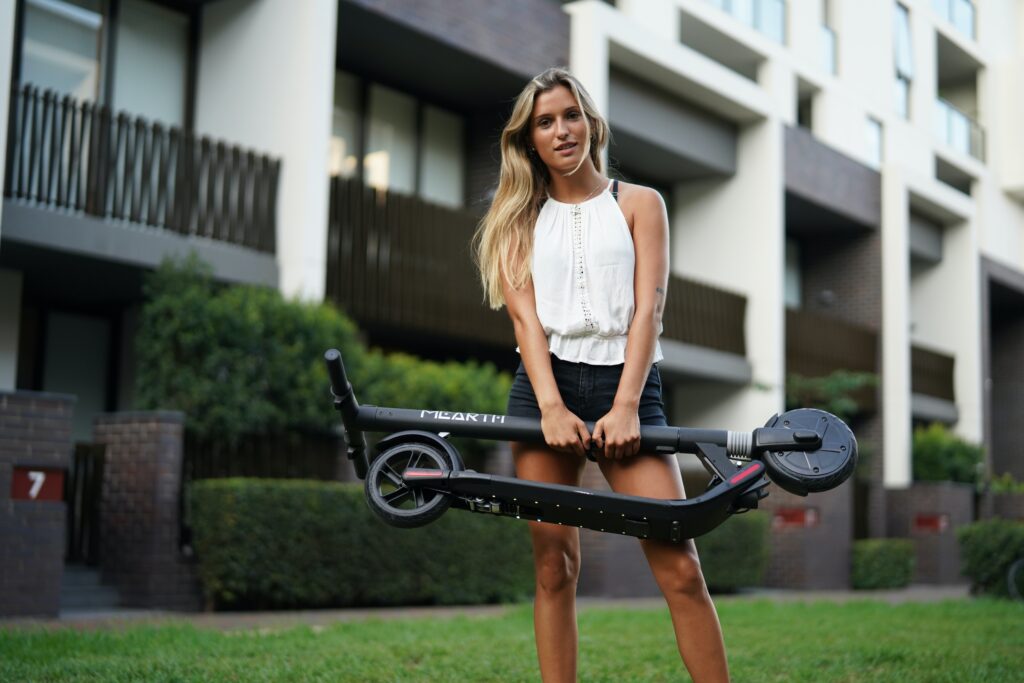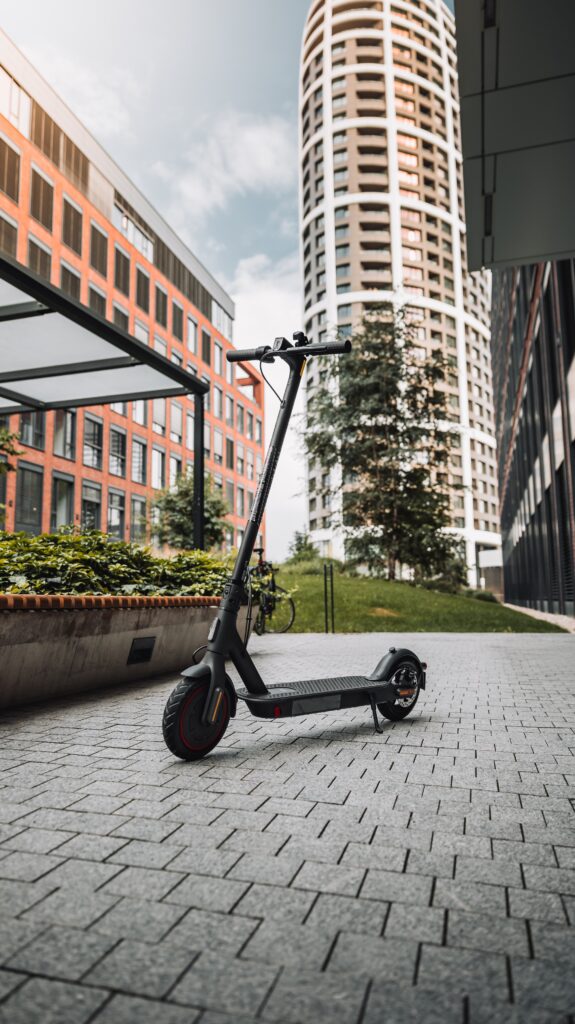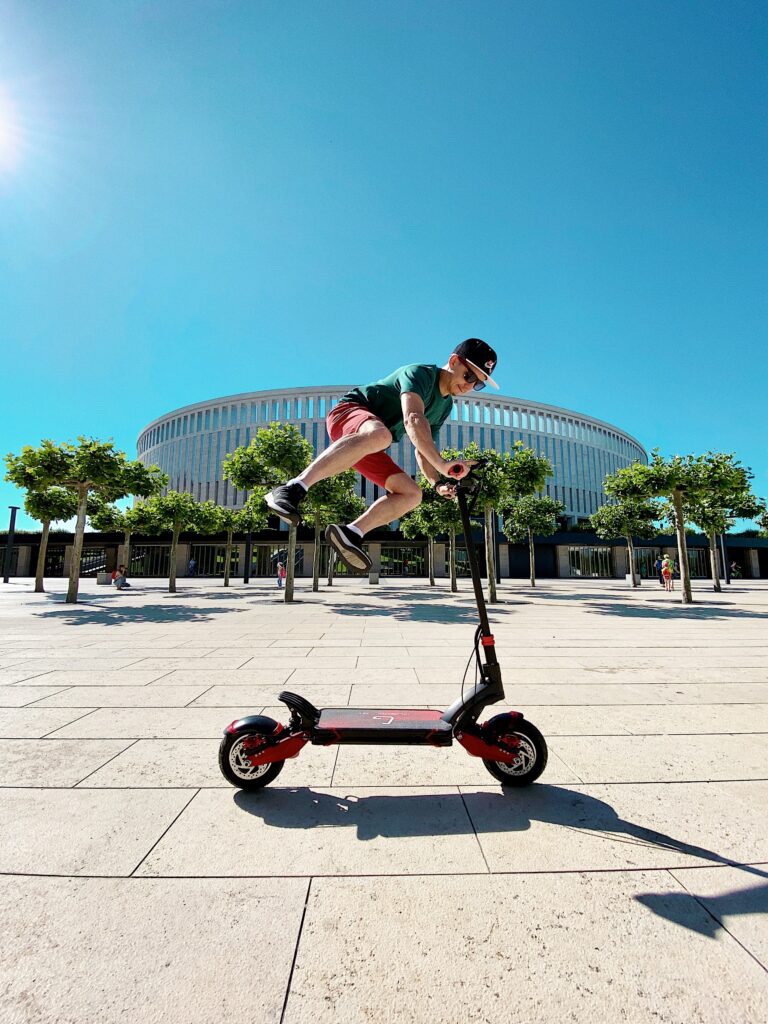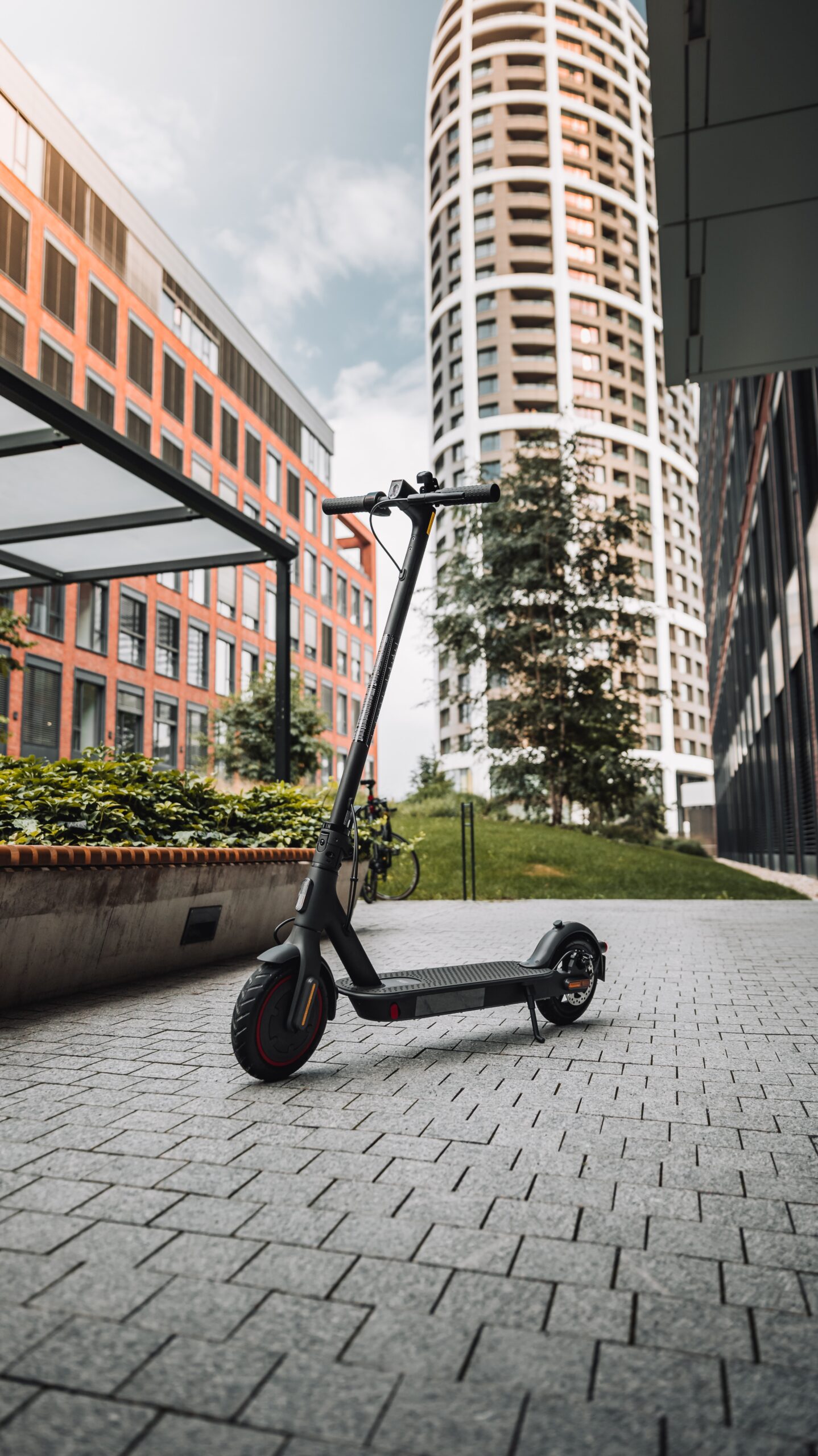So you’ve seen those sleek electric scooters zipping around town and you can’t help but wonder, “How on earth do those things work?” Well, we’ve got you covered. In this animated guide, we’ll break down the mechanics of an electric scooter, giving you a clear understanding of how it operates. From the battery to the motor to the controls, you’ll get an insider’s look at the inner workings of these futuristic forms of transportation. Get ready to have your mind blown as we delve into the world of electric scooters!
Understanding the Mechanics of an Electric Scooter: An Animated Guide
Introduction
Electric scooters have gained popularity as a convenient and environmentally friendly mode of transportation. To fully appreciate the workings of an electric scooter, it’s important to understand its various components and how they interact with each other. In this article, we will delve into the mechanics of an electric scooter, exploring its key components, the movement system, the electrical system, safety features, and considerations for maintenance and troubleshooting.
Components of an Electric Scooter
An electric scooter comprises several components that work together to ensure its smooth operation. These components include handlebars, the deck, forks and suspension, lights and reflectors, a kickstand, a charging port, and a dashboard with controls. Let’s explore each of these components in detail.
Handlebars
The handlebars serve as a steering mechanism and house the essential controls, such as the throttle and brakes. It’s important to ensure the handlebars are securely attached and positioned comfortably for easy maneuverability.
Deck
The deck of an electric scooter provides the necessary platform for the rider to stand on. It should be wide enough to accommodate both feet comfortably, with a non-slip surface for added safety.
Forks and Suspension
Forks and suspension systems on an electric scooter are responsible for absorbing shocks and vibrations, ensuring a smooth ride even on uneven surfaces. Quality suspension will enhance the overall comfort and stability of the scooter.
Lights and Reflectors
Lights and reflectors are crucial for visibility and safety, especially when riding at night or in low-light conditions. They ensure that both the rider and surrounding vehicles can see the scooter and anticipate its movements.
Kickstand
A kickstand allows you to park your electric scooter securely, preventing it from falling over and getting damaged when not in use. It’s important to choose a sturdy kickstand that can support the weight of the scooter.
Charging Port
The charging port is where you connect the charger to replenish the scooter’s battery. It should be easily accessible and well-protected to prevent any damage or water infiltration.
Dashboard and Controls
The dashboard of an electric scooter typically houses various controls, such as power buttons, speed controls, and battery indicators. It provides the rider with essential information and allows easy control over the scooter’s functions.

Electric Motor
The electric motor is the heart of an electric scooter, responsible for converting electrical energy into mechanical energy to propel the scooter forward. Two common types of electric motors used in scooters are brushed DC motors and brushless DC motors.
Brushed DC Motors
Brushed DC motors have been used in electric scooters for many years. They consist of a rotor made up of permanent magnets and a stator with coil windings. The brushes and commutator help to switch the direction of the current, which creates the rotational motion needed to drive the scooter forward.
Brushless DC Motors
Brushless DC motors are more advanced and efficient than brushed DC motors. They eliminate the need for brushes and commutators by utilizing electronic control to switch the current flow. This design reduces friction and increases the motor’s lifespan, efficiency, and performance.
Motor Power and Performance
The power and performance of the electric motor determine the scooter’s acceleration and top speed. The motor’s power is usually measured in watts (W), and higher wattage motors generally provide better performance. However, it’s important to consider the scooter’s intended use and local laws regarding motor power limits.
Motor Control and Speed Regulation
The motor control system, often integrated with the scooter’s controller, is responsible for regulating the motor’s power output and controlling the scooter’s speed. It should feature smooth acceleration and deceleration for a comfortable riding experience.
Battery
The battery is another critical component of an electric scooter, providing the necessary energy to power the motor. Most electric scooters use lithium-ion batteries due to their high energy density, lightweight, and compatibility with electric vehicles.
Lithium-ion Batteries
Lithium-ion batteries offer numerous advantages over other battery types. They have a high energy density, allowing for longer rides and greater range. Additionally, they have a longer lifespan, can be charged quickly, and are relatively lightweight, making them ideal for electric scooters.
Battery Capacity and Range
The battery’s capacity is measured in watt-hours (Wh) and determines how far the scooter can travel on a single charge. A higher capacity battery provides a longer range, allowing you to travel more without recharging.
Charging Time and Methods
Charging time depends on the battery capacity and the charger’s output. It’s important to follow the manufacturer’s recommendations for charging time and methods to ensure optimal battery performance and longevity.
Battery Management and Safety
Proper battery management is essential to maximize the lifespan and safety of the battery. This includes avoiding extreme temperatures, not overcharging or over-discharging the battery, and using reliable chargers specifically designed for electric scooters.

Controller
The controller is the brain of an electric scooter, responsible for interpreting the rider’s inputs and controlling the motor’s operation. It receives signals from the throttle and brake controls and adjusts the motor’s power output accordingly.
Role and Function
The controller’s main function is to regulate the flow of electrical energy from the battery to the motor. It ensures smooth acceleration and deceleration, while also providing protection against overcurrent and overvoltage situations.
Throttle and Brake Integration
The controller works in conjunction with the throttle and brake controls to provide seamless control over the scooter’s speed and braking. It interprets the rider’s inputs and adjusts the motor’s power output accordingly.
Controller Position and Mounting
The controller is typically mounted near the battery or within the scooter’s frame. Its location should ensure good heat dissipation and protection from moisture or physical damage.
Throttle
The throttle is the control mechanism responsible for regulating the motor’s power output, similar to how a gas pedal works in a car. It allows the rider to control the scooter’s speed and acceleration.
Types of Throttles
Electric scooters can have various throttle mechanisms, including thumb throttles, twist throttles, or trigger throttles. Each type has its own advantages and offers a different riding experience.
Throttle Operation
Throttles are typically connected to the controller and vary the voltage or current supplied to the motor, thereby adjusting the scooter’s speed. Riders can control the scooter’s speed by adjusting the throttle position.
Regenerative Braking
Some electric scooters feature regenerative braking, which allows the scooter to recover and store some energy during braking. When the rider engages the brake, the motor acts as a generator and converts the scooter’s kinetic energy into electrical energy, which is then fed back into the battery.

Brakes
Brakes are essential for maintaining control and ensuring safety while riding an electric scooter. Different types of brakes, such as disc brakes and drum brakes, are commonly used in electric scooters.
Disc Brakes
Disc brakes offer excellent stopping power and are commonly found on high-performance electric scooters. They consist of a rotor attached to the wheel and calipers that squeeze the rotor to slow down the scooter.
Drum Brakes
Drum brakes are commonly used on electric scooters, especially those designed for urban commuting. They consist of a drum attached to the wheel and brake shoes or pads that press against the drum to provide braking force.
Regenerative Braking
As mentioned earlier, regenerative braking can also contribute to slowing down the scooter by using the motor as a generator to convert kinetic energy into electrical energy. This helps to improve overall efficiency and extend the battery life.
Wheels and Tires
The wheels and tires of an electric scooter play a crucial role in its overall performance and ride quality. Various factors, such as wheel size, tire type, and tire pressure, should be considered.
Wheel Size and Material
Electric scooters usually come with wheels ranging from 6 to 12 inches in diameter. Larger wheels offer better stability and are more suitable for off-road or uneven terrain. The material composition of the wheels, such as rubber or solid construction, impacts their durability and shock absorption capabilities.
Tubeless Tires
Tubeless tires are becoming increasingly popular in electric scooters due to their puncture resistance and the ability to maintain pressure longer. They offer a smoother ride and eliminate the hassle of having to repair or replace inner tubes.
Tire Pressure and Maintenance
Maintaining the correct tire pressure is crucial for optimal performance and safety. Underinflated tires can reduce the scooter’s efficiency and handling, while overinflated tires may compromise ride comfort and stability. Regularly inspecting and inflating the tires to the manufacturer’s recommended pressure is essential.
Frame
The frame of an electric scooter provides structural support and determines its overall durability and stability. Various materials, such as steel, aluminum, or carbon fiber, are commonly used in scooter frames.
Materials Used
Steel frames offer durability and strength but are heavier compared to other materials. Aluminum frames provide a balance between weight, strength, and affordability. Carbon fiber frames are lightweight and offer excellent strength but tend to be more expensive.
Folding Mechanism
Many electric scooters feature a folding mechanism that allows for easy storage and portability. A well-designed folding mechanism should be sturdy, secure, and easy to operate, providing convenience for users who need to carry or store their scooter regularly.
Weight Capacity and Stability
An electric scooter’s weight capacity refers to the maximum weight it can safely support. It’s important to choose a scooter that can accommodate your weight to maintain stability, performance, and overall safety.
Understanding the Electric Scooter’s Movement
An electric scooter operates by converting electrical energy into mechanical energy, propelling the scooter forward. When the rider activates the throttle, the controller sends a signal to the motor, instructing it to spin. The motor, powered by the scooter’s battery, generates rotational motion, which is transmitted to the wheels, enabling the scooter to move forward. The rider controls the speed and direction through the throttle and the handlebars, while the brakes allow for controlled stopping and maneuverability.
Understanding the Electrical System
The electrical system of an electric scooter consists of the battery, controller, and various wiring connections. The battery supplies the necessary electrical energy, while the controller regulates and controls its distribution. Safeguarding the electrical system against overcurrent, overvoltage, and short circuits is crucial for both performance and safety.
Safety Features and Considerations
Electric scooters come with safety features to enhance rider protection and ensure safe operation. These include lights and reflectors for visibility, brakes with efficient stopping power, suspension systems for stability and shock absorption, and durable frames to withstand various road conditions. It’s important for riders to adhere to local laws and regulations, wear appropriate safety gear, and always ride responsibly to minimize the risk of accidents or injuries.
Maintenance and Troubleshooting
Proper maintenance is essential to keep an electric scooter in optimal condition and prolong its lifespan. Regular cleaning and lubrication, tire and brake pad replacements, and battery maintenance are crucial tasks. It’s also necessary to be aware of common issues that may arise, such as electrical problems, motor performance issues, or battery-related concerns. When faced with troubleshooting, it’s advisable to consult the manufacturer’s guidelines or seek professional assistance if needed.
In conclusion, understanding the mechanics of an electric scooter allows you to have a comprehensive knowledge of its components, movement system, electrical system, safety features, and maintenance requirements. By familiarizing yourself with these aspects, you can ensure a safer and more enjoyable riding experience while maintaining the longevity and performance of your electric scooter.




